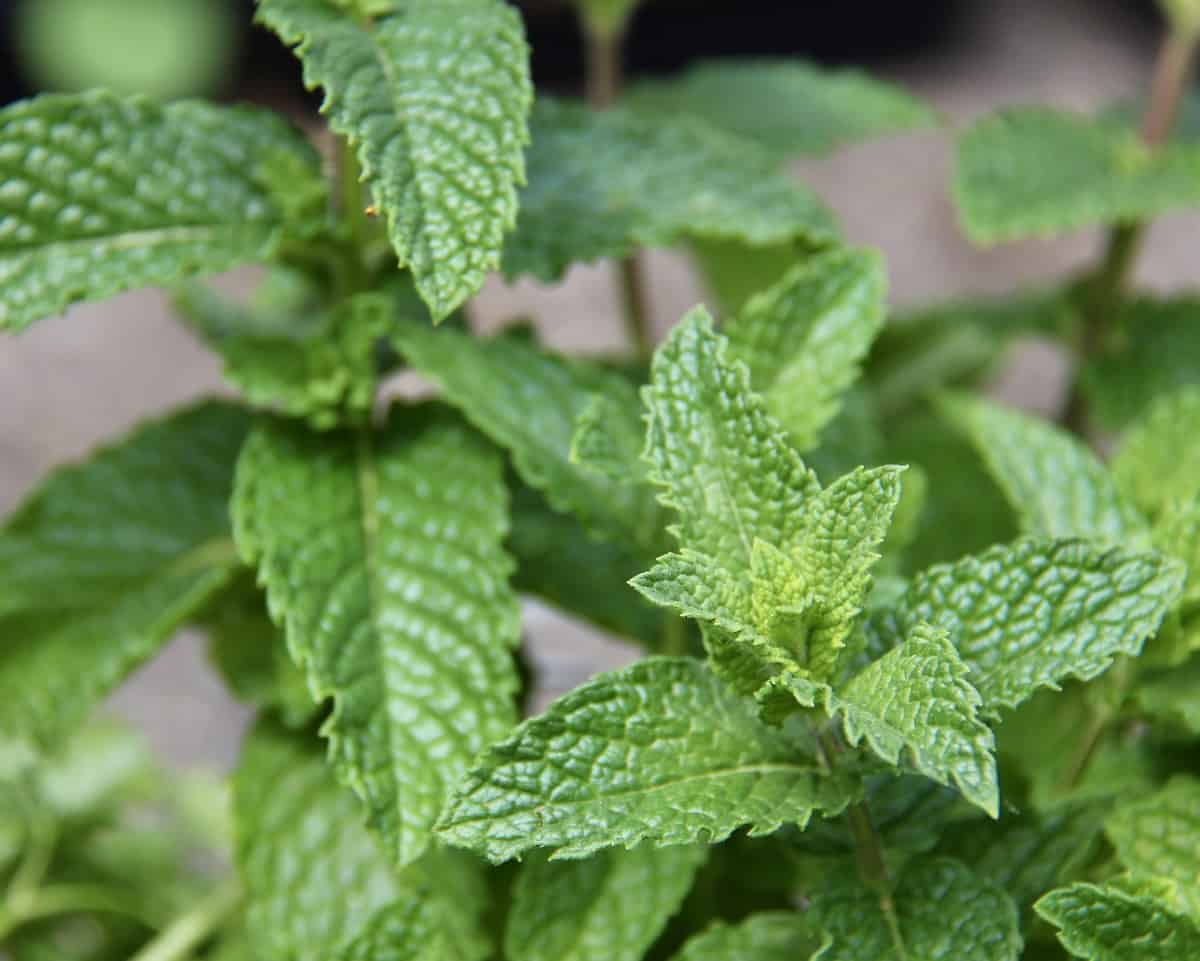Home>Types of Gardening>Edible Gardening>What Goes Well With Rosemary


Edible Gardening
What Goes Well With Rosemary
Published: January 30, 2024
Discover the perfect companions for rosemary in your edible garden. Learn about the best plants to grow alongside rosemary for a thriving and diverse garden. Explore the benefits of companion planting for your edible gardening endeavors.
(Many of the links in this article redirect to a specific reviewed product. Your purchase of these products through affiliate links helps to generate commission for Chicagolandgardening.com, at no extra cost. Learn more)
Table of Contents
Introduction
Welcome to the delightful world of rosemary, a fragrant and versatile herb that has been cherished for centuries in culinary and medicinal applications. With its woody aroma and robust flavor, rosemary has become a staple in many kitchens, adding a touch of sophistication to a wide array of dishes. Beyond its culinary appeal, rosemary also boasts a rich history, symbolizing remembrance and loyalty in various cultures.
As we embark on a journey to explore the perfect pairings for rosemary, it’s important to understand the herb’s unique characteristics. Rosemary’s pine-like fragrance and slightly peppery taste make it a remarkable complement to an assortment of ingredients, from succulent meats and fresh seafood to vibrant vegetables and delectable desserts. Additionally, its compatibility with various beverages further enhances its culinary prowess, making it a beloved choice for both chefs and home cooks alike.
Throughout this guide, we will delve into the art of combining rosemary with different food categories, unlocking the potential for creating memorable and palate-pleasing dishes. So, whether you’re a seasoned chef or an enthusiastic home cook, join us as we uncover the delightful pairings that make rosemary a standout herb in the culinary world.
Meat and Poultry
Rosemary’s robust flavor and aromatic profile make it an exceptional partner for a wide range of meats and poultry, elevating dishes with its distinctive essence. When paired with red meat, such as lamb or beef, rosemary adds a delightful earthiness that complements the richness of the meat. Whether used in marinades, rubs, or simply as a garnish, rosemary infuses a depth of flavor that enhances the overall dining experience.
For poultry dishes, rosemary offers a refreshing and herbaceous note that beautifully accentuates the natural flavors of chicken, turkey, and duck. Whether incorporated into stuffing, sprinkled over roasted poultry, or infused into sauces, rosemary adds a delightful aromatic quality that balances the savory elements of the dish.
One classic dish that exemplifies the harmonious marriage of rosemary with meat is the iconic rosemary-infused roast lamb. The herb’s pungent aroma and slightly peppery taste complement the tender lamb, resulting in a dish that is both hearty and aromatic. Additionally, rosemary pairs exquisitely with grilled steaks, imparting a tantalizing fragrance and a nuanced flavor profile that tantalizes the taste buds.
When cooking with ground meat, such as beef or turkey, incorporating rosemary into meatballs or meatloaf yields a savory and aromatic result. The herb’s ability to permeate the meat creates a depth of flavor that is truly satisfying. Furthermore, rosemary’s compatibility with game meats, such as venison and wild boar, adds a layer of complexity to these robust proteins, enhancing their natural richness with its distinctive herbal essence.
Whether you’re preparing a succulent roast, a hearty stew, or a sizzling steak, rosemary’s versatility and ability to enhance the flavors of meat and poultry make it a prized companion in the culinary world.
Seafood
When it comes to seafood, rosemary offers a unique and delightful flavor profile that complements a variety of dishes, from delicate fish fillets to robust seafood stews. The herb’s aromatic and slightly pine-like essence enhances the natural flavors of seafood, creating a harmonious culinary experience.
For grilled or roasted fish, incorporating rosemary into the cooking process infuses the dish with a fragrant and herbaceous aroma, elevating the overall dining experience. Whether used as a seasoning for salmon, trout, or sea bass, rosemary adds a refreshing and earthy note that pairs beautifully with the delicate flavors of the seafood.
In seafood soups and stews, such as bouillabaisse or clam chowder, rosemary contributes a layer of complexity, enriching the broth with its distinctive flavor. The herb’s ability to meld with the savory components of the dish creates a depth of taste that is both comforting and invigorating.
When preparing seafood skewers or kebabs, threading rosemary sprigs onto the skewers not only imparts the herb’s flavor into the seafood but also adds a visually appealing and aromatic element to the presentation. The infusion of rosemary’s essence into the seafood while grilling or broiling results in a delightful interplay of flavors and aromas.
Additionally, rosemary pairs exquisitely with shellfish, such as shrimp and lobster, adding a hint of herbal sophistication to these indulgent delicacies. Whether used in marinades, sauces, or simply as a garnish, rosemary elevates the dining experience, creating a memorable and flavorful seafood dish.
With its ability to enhance the natural nuances of seafood and contribute a unique aromatic dimension, rosemary stands as a versatile and captivating companion in the realm of seafood cuisine.
Vegetables
Rosemary’s versatility extends to the realm of vegetables, where it brings a delightful depth of flavor and aromatic appeal to a wide array of dishes. Whether used in roasted vegetables, savory tarts, or hearty stews, rosemary elevates the overall culinary experience with its herbaceous and slightly woody essence.
When roasting vegetables, such as potatoes, carrots, or parsnips, adding fresh rosemary sprigs or dried rosemary to the roasting pan infuses the vegetables with a fragrant and earthy aroma. The herb’s robust flavor complements the natural sweetness of the vegetables, creating a harmonious balance of tastes and textures.
In vegetable-based soups and braises, rosemary adds a layer of complexity, enriching the broth with its distinctive flavor. Whether incorporated into a hearty minestrone or a comforting root vegetable stew, rosemary contributes a comforting and aromatic element that enhances the overall dining experience.
One classic pairing that exemplifies the compatibility of rosemary with vegetables is the combination of roasted tomatoes and rosemary. The herb’s slightly peppery and pine-like notes complement the sweetness of the tomatoes, resulting in a tantalizing flavor profile that is both comforting and invigorating.
When preparing savory tarts or quiches, incorporating rosemary into the pastry or filling adds a delightful herbaceous quality that elevates the dish. Whether combined with caramelized onions, roasted peppers, or sautéed mushrooms, rosemary imparts a nuanced and aromatic dimension to the savory flavors of the dish.
Furthermore, when grilling or sautéing vegetables, such as zucchini, eggplant, or bell peppers, adding a sprinkle of fresh or dried rosemary enhances the dish with a refreshing and herbaceous note. The herb’s ability to complement the natural flavors of the vegetables creates a memorable and satisfying culinary experience.
With its ability to enhance the natural nuances of vegetables and contribute a unique aromatic dimension, rosemary stands as a versatile and captivating companion in the realm of vegetable cuisine.
Breads and Grains
Rosemary’s aromatic and slightly pine-like flavor profile makes it a delightful addition to breads and grains, infusing these staples with a fragrant and herbaceous essence that elevates their appeal. Whether incorporated into bread dough, sprinkled over grains, or infused into savory pastries, rosemary adds a unique and captivating dimension to these culinary staples.
When baking bread, whether it’s a rustic loaf, focaccia, or savory rolls, adding fresh or dried rosemary to the dough imparts a delightful aroma and flavor to the finished product. The herb’s earthy and slightly peppery notes complement the hearty texture of bread, creating a satisfying and aromatic experience with every bite.
For grain-based dishes such as pilafs, risottos, or quinoa salads, incorporating rosemary adds a refreshing and herbaceous quality that enhances the overall dish. The herb’s ability to infuse the grains with its distinctive flavor creates a delightful interplay of tastes and aromas, elevating these dishes to new heights.
One classic pairing that exemplifies the compatibility of rosemary with breads and grains is the combination of rosemary-infused focaccia. The herb’s aromatic essence permeates the bread, creating a tantalizing fragrance and a nuanced flavor profile that tantalizes the taste buds. Additionally, incorporating rosemary into savory scones or biscuits adds a delightful herbal note that pairs beautifully with the buttery richness of these baked goods.
When preparing grain-based salads or side dishes, such as couscous or bulgur pilaf, adding a sprinkle of fresh or dried rosemary contributes a layer of complexity and a refreshing herbaceous element to the dish. The herb’s ability to enhance the natural flavors of the grains creates a memorable and satisfying culinary experience.
With its ability to infuse breads and grains with a unique aromatic dimension, rosemary stands as a versatile and captivating companion in the realm of baking and grain-based cuisine.
Desserts
While commonly associated with savory dishes, rosemary also brings a surprising and delightful dimension to the realm of desserts, adding a unique herbal note that complements a variety of sweet treats. The herb’s aromatic and slightly woody essence pairs remarkably well with the natural sweetness of desserts, creating a harmonious balance of flavors and textures.
When used in baking, rosemary infuses cakes, cookies, and shortbreads with a fragrant and herbaceous aroma, elevating these treats with its distinctive flavor profile. Whether incorporated into a buttery pound cake, delicate shortbread cookies, or a citrus-infused cake, rosemary adds a refreshing and unexpected twist to traditional dessert offerings.
In fruit-based desserts, such as compotes, poached fruits, or fruit tarts, adding a hint of rosemary contributes a layer of complexity, enhancing the natural sweetness of the fruits with a refreshing and herbaceous note. The herb’s ability to meld with the fruity elements of the dessert creates a delightful interplay of flavors, elevating the overall dining experience.
One classic pairing that exemplifies the compatibility of rosemary with desserts is the combination of rosemary-infused honey drizzled over fresh fruit or artisanal cheeses. The herb’s aromatic essence enhances the sweetness of the honey, creating a luxurious and sophisticated accompaniment that tantalizes the taste buds.
When preparing ice creams or sorbets, infusing the base with rosemary imparts a subtle and intriguing herbal note that adds depth to the frozen treat. The herb’s ability to complement the creamy texture of the dessert creates a memorable and satisfying culinary experience.
With its ability to enhance the natural nuances of desserts and contribute a unique aromatic dimension, rosemary stands as a versatile and captivating companion in the realm of sweet treats and confections.
Beverages
While often celebrated for its culinary applications, rosemary also brings a delightful and unexpected dimension to the world of beverages, infusing drinks with its aromatic and herbaceous essence. From refreshing cocktails and mocktails to soothing herbal infusions, rosemary adds a unique and captivating element to a wide array of beverages, creating a harmonious balance of flavors and aromas.
When used in cocktails, rosemary lends a refreshing and herbaceous note that complements a variety of spirits and mixers. Whether muddled in a classic gin and tonic, used as a garnish for a citrus-infused cocktail, or incorporated into a botanical-inspired concoction, rosemary adds a nuanced and aromatic quality that elevates the drinking experience.
For mocktails and non-alcoholic beverages, such as infused waters, lemonades, and herbal teas, adding a sprig of fresh rosemary imparts a refreshing and herbaceous element that enhances the overall drink. The herb’s ability to meld with the fruity or floral components of the beverage creates a delightful interplay of flavors, offering a satisfying and invigorating drinking experience.
One classic pairing that exemplifies the compatibility of rosemary with beverages is the combination of rosemary-infused simple syrup in specialty coffees and hot chocolates. The herb’s aromatic essence enhances the sweetness of the syrup, creating a luxurious and comforting addition that adds depth to the warm beverages.
When preparing herbal infusions or tisanes, such as rosemary and lemon verbena tea, the herb’s fragrant and slightly pine-like notes contribute a layer of complexity, enriching the infusion with its distinctive flavor. The herb’s ability to enhance the natural nuances of the beverage creates a memorable and satisfying drinking experience.
With its ability to infuse beverages with a unique aromatic dimension, rosemary stands as a versatile and captivating companion in the realm of mixology and herbal drinks, offering a delightful twist to traditional beverage offerings.
Conclusion
Throughout this exploration of the delightful pairings for rosemary, we have uncovered the herb’s remarkable versatility and its ability to enhance a wide array of culinary creations. From its harmonious companionship with meats and poultry to its surprising and delightful dimension in desserts and beverages, rosemary has proven to be a captivating and indispensable ingredient in the culinary world.
With its fragrant and slightly woody aroma, rosemary brings a refreshing and herbaceous note to savory dishes, adding a layer of complexity and depth to the flavors. Whether used in roasted meats, vegetable-based soups, or breads and grains, the herb’s ability to infuse dishes with its distinctive essence creates a memorable and satisfying dining experience.
Furthermore, the herb’s compatibility with seafood, both delicate and robust, showcases its ability to complement a variety of flavors and textures, adding a unique aromatic dimension to seafood-based dishes. Whether incorporated into grilled fish, seafood stews, or shellfish preparations, rosemary elevates the natural nuances of seafood, creating a harmonious and delightful culinary experience.
In the realm of desserts and beverages, rosemary’s surprising and delightful presence adds a refreshing twist to traditional sweet treats and drinks. Whether infused into baked goods, fruit-based desserts, or cocktails and herbal infusions, the herb contributes a unique aromatic quality that captivates the palate and offers a new perspective on familiar flavors.
As we conclude our journey through the world of rosemary pairings, it becomes evident that this versatile herb holds a special place in the hearts of chefs, home cooks, and food enthusiasts alike. Its ability to elevate dishes with its distinctive aroma and flavor has solidified its status as a cherished and indispensable ingredient in the culinary landscape. Whether used in classic preparations or innovative culinary creations, rosemary continues to inspire and delight, offering a timeless and aromatic contribution to the art of cooking and dining.









